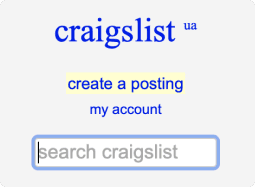Guide to Data Parsing: From Basic Principles to Practice
Parsing is the process of collecting data, processing
and analyzing it. Learn about data parsing methods
and tools on the DataOx blog.
Ask us to scrape the website and receive free data sample in XLSX, CSV, JSON or Google Sheet in 3 days
Scraping is the our field of expertise: we completed more than 800 scraping projects (including protected resources)
Table of contents
Estimated reading time: 7 minutes
Introduction to Information Parsing
The importance of information increases every day, and the demand to extract, read, and analyze it grows along with it. Today, it is impossible to imagine a business world without Big Data. In nearly every industry, information is the principal driving force for business growth. But not all content extracted from online sources is readable. That’s where data parsing comes to the rescue.
In this article, we’ll learn what parsing is, what a parser does, the use cases of data parsing, and other interesting facts.
What is Data Parsing?
When you extract content from web sources, the next step is content parsing or converting information into an understandable and readable format. The point is content extraction provides content in raw HTML format, which is not possible to read and understand. Therefore, it should be converted into an accessible and readable format.
What is a Data Parser
What is meant by parsing? Let’s define it. While parsing, every single string does not need to be converted, and a well-built parser can identify required information, select it, and convert it into CVS, JSON, or table format.
So, what is the meaning of parse? To parse means to analyze a text or string into syntactic components, and a parser is a program that is used to decompose and transform content into a readable format for further processing.

Generally, a data parser is a software program that executes the process of parsing but to be more specific, the parser also analyzes tokens produced by the lexer. Thus, the parser takes care of the most significant part of parsing, and the lexer takes the role of assistant. A parser produces a structured insight from the code in the form of a tree known as a syntax tree. It is called a tree because it comprises different levels.
The Parser’s Structure
A parser is composed of a lexer (also known as a tokenizer) and the proper parser. First, the lexer inspects the content and breaks it into tokens. Then the parser inspects the tokens and produces a syntactic analysis. A lexer and a parser work in that order.
The proper parser takes care of the structure of the content, makes a syntactic analysis, and creates a parse tree. A parse tree or syntax tree is an ordered tree with the syntactic structure of a string.
The Process of Data Parsing
Data parsing involves two steps: lexical analysis and syntactic analysis.
Lexical analysis
Lexical analysis is a primary step of parsing wherein the allocation of collected data structures takes place before execution.
Syntactic analysis
Syntactic analysis is the second step. The allocated data is executed based on the parser’s pre-written code and structured data.
Types of Data Parsing
There are two parsing methods: top-down and bottom-up. They mainly differ in regard to the order in which the nodes of the parse tree are generated.

Top-down data parsing
A top-down parser starts parsing at the first symbol of the syntax, identifying the root of the syntax tree before moving to the bottom.
Bottom-up data parsing
A bottom-up parser starts parsing the content back to the start symbol, up from the root of the tree, as it tries to find the right source of a current string by moving backward.
Parsing and Technologies
Because of the flexibility of data parsers, they can be used with various technologies:
- Scripting languages used in games, multimedia, web applications, plugins, and extensions.
- Modeling languages used by system analysts or developers to understand system requirements, behaviors, and structures.
- HTML for web page and web application creation and XML for transforming information between websites and web applications.
- Interactive data language is used for the interactive processing numerous information.
- SQL programming language for content management.
- HTTPS and Internet Protocols are responsible for data communication across the web.
Parsing in Programming
Parsing is widely used in top-level programming languages. A string of commands is separated into components, which are then analyzed for proper syntax and linked to tags defining each component. This process comprises parse meaning in programming.
Let’s consider a very simple example: if you break down the sentence into parts (verbs, nouns, prepositions), you would parse the sentence, thus transforming one form of data into a data structure.
Implementing Parser
As we said, a parser is used to transform content into a syntax tree, which represents the hierarchical order of the elements. A parser is fundamental in the following applications:
- Google or Bing parses content from downloaded webpages with crawlers, and the parsed information is used for browsing.
- XML parsers take care of analyzing XML documents and preparing their content for further use.
- HTML code is a string of symbols for a computer that should be analyzed by a parser and later provided as structured content.
- The reading of programming code is executed by a parser that delivers a data structure to the language processor to generate machine code.
Why Data Parsing Matters
Thanks to parsing, it is possible to identify the structure and extract the content. It is a necessary process, as different programs need data in relevant forms and parsing enables you to transform content to be understood by specific programs as in the case of software programs that are written by humans but executed by computers.
Consequently, people write programs, so they can understand them, but software programs transform them so that computers can understand them.
Data Parsing in Web Scraping
Web scraping, one of the latest technologies dealing with content, needs parsing to transform content with irrelevant information into a structured and readable format. This is required for making a proper analysis and providing accurate results. Data parsing follows right after web scraping, where the purity of extracted content will define the results after analysis. This process should be done properly, as any decision made with the wrong analysis will have a negative impact.
Outsource Data Parser or Build Your Own?
This question concerns everyone who is faced with the parsing issue. The answer depends on whether you’re a big company with a lot of resources to build and maintain a parser, or a small or medium business that needs a parsing solution to stay competitive and grow within the market.
How about investigating the pros and cons of both options?
Pros of an in-house data parser
- You have control over the planning, development, and testing.
- You have a parser under your requirements and can be updated upon necessity.
Cons of an in-house parser
- You need to hire and control a development team.
- You need to buy a strong server for your needs.
- As a rule, building a parser is more expensive than buying.
- Occasionally, maintenance is compulsory, and it will require more expenses and more time.
Pros of outsourcing a parser
- No need to spend money on the hiring team; everything is taken care of by your supplier.
- All issues are solved by professionals who are familiar with their technology.
- You get a 100% working parser, tested, and checked to fit your requirements.
- You won’t need to worry about controlling and making decisions, thus saving you time.
Cons of outsourcing a parser
- Buying is normally less expensive.
- Your control over the whole working process is limited.
Practicing Data Parsing
Parsing allows for more efficient use of information, which is necessary in today's business world. Let’s consider a number of avenues for practicing info parsing and talking business advantages.
Streamline workflow
By transforming unformed content into an understandable format, organizations can optimize their workflow, particularly its effect on the performance of programmers, data analysts, and marketers.
Enhance recruitment
With the help of parsing tools, HR specialists will be able to scan hundreds of resumes per day. Depending on your industry, your candidates may have a variety of data points that should be analyzed and considered.
Of course, manual processing will take a lot of time, and thanks to a dedicated resume parser, your HR department’s efficiency will increase substantially.
Data modernization
With the help of parsing, you can forget about out-of-date formats that are hard to decipher. By using the right parsers, your content will be safe while transforming into a more usable format.
Investment analysis
Before any investment, data analysis is a compulsory requirement; evaluating earning, forecast or competitive analysis demands time and substantial data. That’s why data analysts and investors are practicing parsing to get better insights for making their final decision.

Saving time and money
Once you have the right parsing solution, getting valuable insights for your business needs becomes more efficient. Although it will cost you some initial investments, in the long run, you’ll save time and money.
Information Data Parsing FAQ
What is data parsing?
Parsing is the process of collecting data, processing, and analyzing it. This method is used when it is necessary to process a large amount of information that is difficult to handle manually.
What is a data parser?
A parser is a program for collecting and organizing information posted on various sites. The data source can be text content, website HTML code, headings, menu items, databases, and other elements.
How to parse data?
The parsing process is the syntactic analysis of any set of related data. In general, parsing is performed in several stages:
- Scanning the initial array of information (HTML code, text, database, etc.).
- Isolation of semantically significant units according to given parameters – for example, headings, links, paragraphs, fragments in bold type, and menu items.
- Converting the received data into a format convenient for studying, as well as their systematization in the form of tables or reports for further use.
Final Thoughts
Now that you have a better understanding of parsing, you know how it can be used and when. If you need to parse a huge amount of information, you’ll either have to hire a team of developers or buy a parser in compliance with your business requirement.
At DataOx, we are always ready to help you with sophisticated parsing solutions or advice. Schedule a free consultation with our expert to learn how to get proper data analysis and valuable insights.
Publishing date: Sun Apr 23 2023
Last update date: Wed Apr 19 2023




